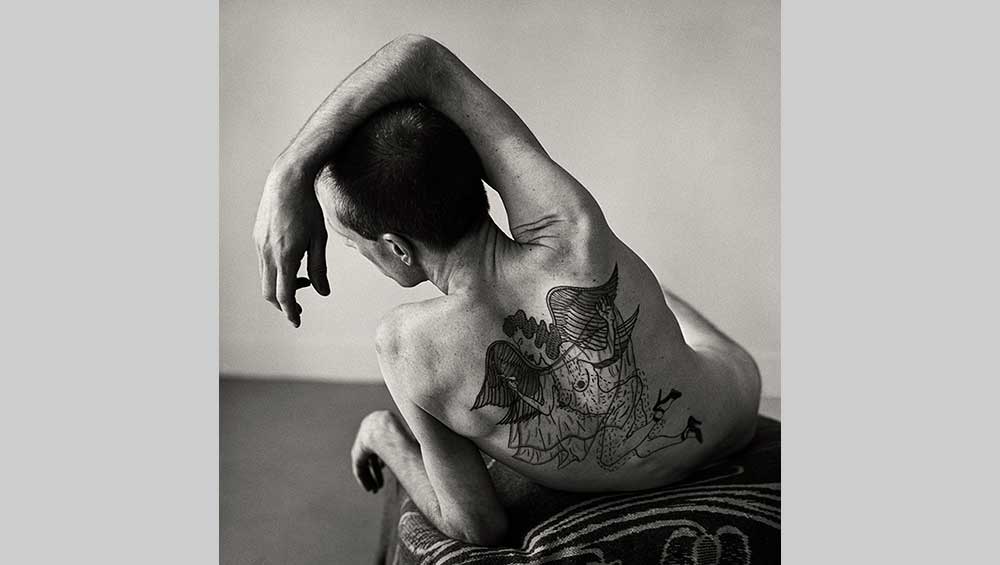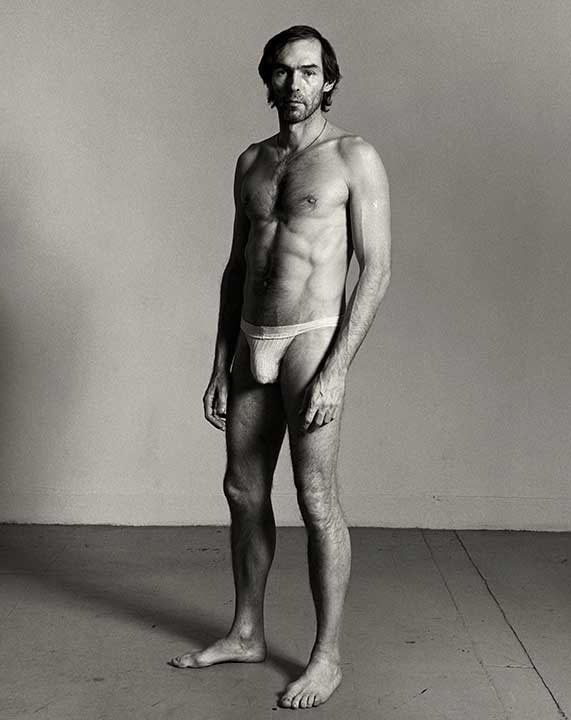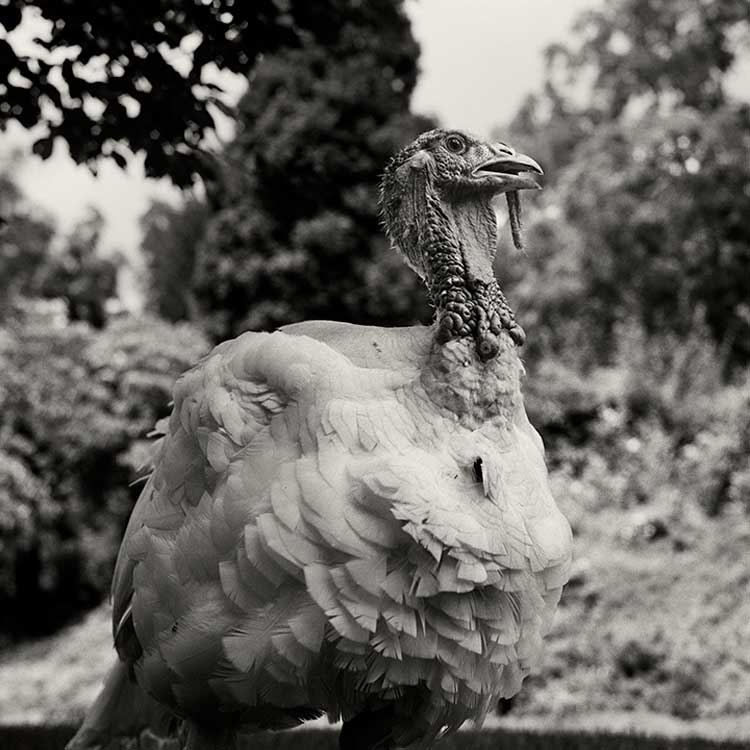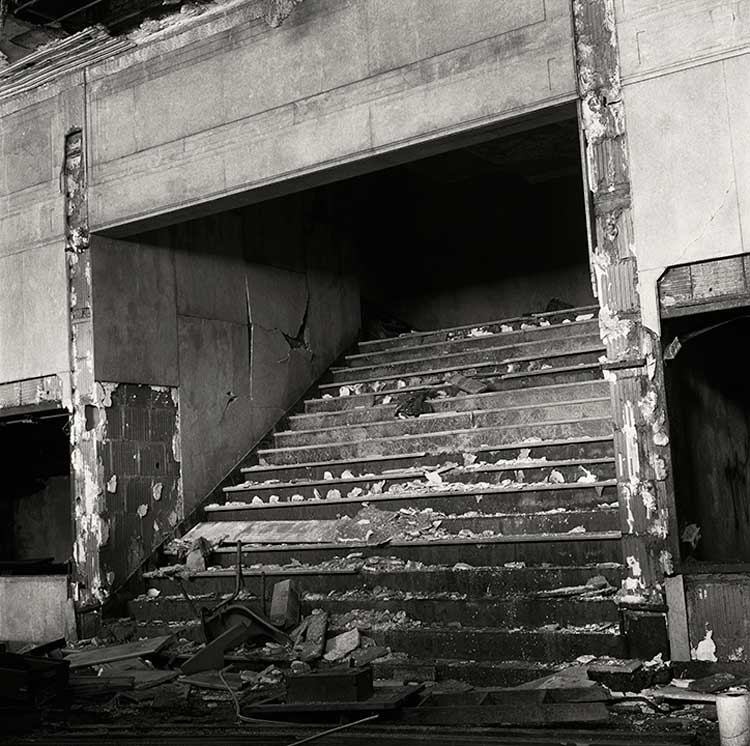
Peter Hujar. Ethyl Eichelberger, 1979. Image © 2025 the Peter Hujar Archive / Artists Rights Society (ARS), NY, DACS London, Pace Gallery, NY, Fraenkel Gallery, SF, Maureen Paley, London, and Mai 36 Galerie, Zurich.
Raven Row, London
30 January – 6 April 2025
by JOE LLOYD
In 1962, the New York photographer Peter Hujar (1934-87) won a Fulbright Scholarship and travelled to Italy. In Palermo, he discovered the Capuchin Catacombs, a spine-chilling underground network filled with skeletons and dehydrated corpses, many dressed in the clothes they wore in life, like the cast of a costume drama. More than a decade later, after a show where he failed to sell any of his photographs, he embarked on a book project that would juxtapose these images with portraits of his downtown contemporaries, including William Burroughs, John Waters and Divine.

Peter Hujar. Self-Portrait, 1980. Image © 2025 the Peter Hujar Archive / Artists Rights Society (ARS), NY, DACS London, Pace Gallery, NY, Fraenkel Gallery, SF, Maureen Paley, London, and Mai 36 Galerie, Zurich.
Published in 1976, it was called Portraits of Life and Death. Hujar’s friend Susan Sontag provided an introduction while she was in hospital being treated for breast cancer. She wrote: “Fleshed and moist-eyed friends and acquaintances stand, sit, slouch, mostly lie – and are made to appear to meditate on their own mortality … Peter Hujar knows that portraits in life are always, also, portraits in death.” The book, now regarded as a landmark, was not widely celebrated at the time. But it still gave Hujar a reputation as a chronicler of a sort of glitzy morbidity. Although understanding of his work has broadened since, this tag still haunts his work – something compounded given his own death, at 53, from Aids-related pneumonia.
,-1973.jpg)
Peter Hujar. Richie Gallo (Backstage, The Life & Times of Joseph Stalin, Brooklyn Academy of Music), 1973. Image © 2025 the Peter Hujar Archive / Artists Rights Society (ARS), NY, DACS London, Pace Gallery, NY, Fraenkel Gallery, SF, Maureen Paley, London, and Mai 36 Galerie, Zurich.
Eyes Open in the Dark brushes away stereotypes and shows Hujar to be a photographer of real range. There is some of the sensuous morbidity. A 1973 backstage snap from Robert Wilson’s opera The Life and Times of Joseph Stalin features a performer wrapped up in a veil, like the Christ in the Sansevero Chapel. But there is much more besides. It is the first exhibition since Hujar’s death to be able to draw from the entirety of his oeuvre. It is curated by his biographer, John Douglas Millar, and his friend Gary Schneider, who appears here in the nude, bent over backwards. Although the focus is on the output of Hujar’s last decade, there are selections from throughout his career.

Peter Hujar. White Turkey, Pennsylvania, 1985. Image © 2025 the Peter Hujar Archive / Artists Rights Society (ARS), NY, DACS London, Pace Gallery, NY, Fraenkel Gallery, SF, Maureen Paley, London, and Mai 36 Galerie, Zurich.
Hujar took portraits, some of them nude; views of New York; closeup shots of objects such as shoes; and documented people sleeping in doors or cruising on piers. There is a room devoted to his views of the Hudson River, where the water burbles and shimmers. Threaded throughout are images of animals, living and dead. A turkey gets a portrait, as does a dead cat. In Raven Row, there are some focused rooms, but also sections where myriad pieces are placed together, challenging you to find connection. Some critics see Hujar’s range as a lack of focus, an inability to focus on a single artistic project, but it could be said that Hujar’s consistency was the way in which he rendered these images. Even in the most candid, unplanned moments – such as a 1981 shot of David Wojnarowicz holding up a snake – you are somehow aware of Hujar’s presence behind the lens, again in dialogue with the subject.
,-Soho,-New-York,-1976.jpg)
Peter Hujar. Stephen Varble (III), Soho, New York, 1976. Image © 2025 the Peter Hujar Archive / Artists Rights Society (ARS), NY, DACS London, Pace Gallery, NY, Fraenkel Gallery, SF, Maureen Paley, London, and Mai 36 Galerie, Zurich.
Hujar worked in black and white, primarily using a twin-lens reflex camera and hand-making prints in a darkroom. He quickly achieved mastery of this process. Hujar was a photographic descendant of the tenebrists: his greyscale images feature an astonishing range of tones. Sometimes, as with a 1978 nude crumpled on a sofa or a 1980 portrait of a sleeping Nicolas Abdallah Moufarrege, there is a downright sumptuousness in the caress of light and shadows. Perhaps his most famous single image features transgender Warhol superstar Candy Darling on her hospital deathbed in 1973, surrounded by flowers. Darling’s languid pose – a performance despite being on the verge of death – lends the image a rapturous glamour even as it depicts a hackle-raising tragedy. This version does not feature at Raven Row, but instead we have a more intimate portrait from the same year.
,-1973.jpg)
Peter Hujar. Person in Veil (Backstage, The Life & Times of Joseph Stalin, Brooklyn Academy of Music), 1973. Image © 2025 the Peter Hujar Archive / Artists Rights Society (ARS), NY, DACS London, Pace Gallery, NY, Fraenkel Gallery, SF, Maureen Paley, London, and Mai 36 Galerie, Zurich.
Hujar was at once an outsider and an insider, in life and art. He was an openly gay man in times of prejudice; he witnessed the Stonewall riots and provided a photograph for a poster advertising the Gay Liberation Front, though he was no activist. He was brought up on his grandparents’ farm, where he became fluent in Ukrainian before learning English at school. When he was 11, he moved to New York to live with his mother and her second husband, but at 16 he left this abusive home to strike out on his own. By 1953, he was an apprentice at a commercial photography house, where he was able to use the darkroom after hours. He did commercial work until 1967, including assignments for GQ and Harper’s Bazaar. But he valued artistic freedom above security, and quit.

Peter Hujar. Canal Street Pier, New York (Stairs), 1983. Image © 2025 the Peter Hujar Archive / Artists Rights Society (ARS), NY, DACS London, Pace Gallery, NY, Fraenkel Gallery, SF, Maureen Paley, London, and Mai 36 Galerie, Zurich.
Living and working in a loft apartment in the East Village, he was surrounded by a glamorous circle of friends and admirers, including Fran Lebowitz and Sontag. He dated fellow artists Paul Thek and Wojnarowicz, both of whom also eventually died of Aids-related illness. He was admired by the photographer Richard Avedon. Yet he was often penniless. He had only a handful of exhibitions and a single book. This was at least in part due to his intransigence. He would leave invitations unopened. He once got into a physical fight with two gallerists. As Lebowitz said at his funeral: “Peter Hujar has hung up on every important photography dealer in the western world.”
,-1974.jpg)
Peter Hujar. John Flowers (Backstage, Palm Casino Revue), 1974. Image © 2025 the Peter Hujar Archive / Artists Rights Society (ARS), NY, DACS London, Pace Gallery, NY, Fraenkel Gallery, SF, Maureen Paley, London, and Mai 36 Galerie, Zurich.
During his life, his work was overshadowed by Robert Mapplethorpe’s soft-focus, artistically posed photographs. While Mapplethorpe composed suggestive shots of leather fetishists, Hujar captured men’s faces during the moment of orgasm. A 1975 self-portrait shows him at play with a double-ended dildo. After his death, he was seen as a lesser predecessor to Mapplethorpe. But in recent years the tide has turned in Hujar’s favour, perhaps because he more clearly chronicled a bohemian New York that has acquired romance as it sinks into history. While Mapplethorpe perfected his portraiture in the studio, Hujar’s work is out and about, cruising piers and crashing parties. He made his world, rather than himself, his main subject.
When HIV began to claim the lives of Hujar’s friends, he shot their remains with dignity and respect. The actor and drag queen Jackie Curtis appears peacefully slumbering in his casket (1985). When Hujar died in 1987, Wojnarowicz was there to photograph him, with an undaunted plainness. This triptych face, arms and feet cut through the fantasy of Hujar’s more artful photographs. Death here seems very final. But elsewhere in Raven Row, Hujar’s vanished demimonde seems temporarily recalled to life.